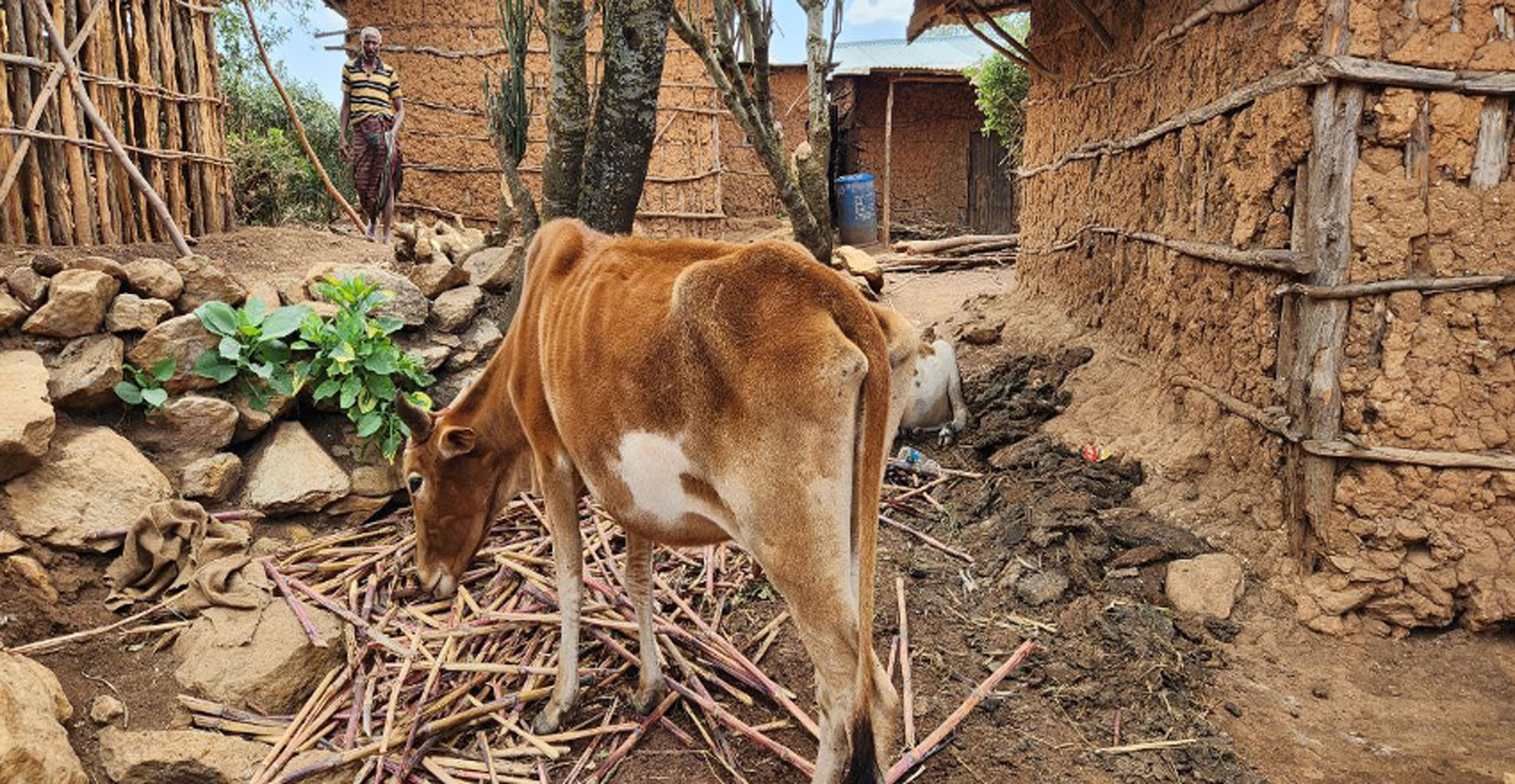We received hundreds of applications in response to our first call for agricultural science proposals to improve food security among smallholder farmers in developing countries. Most look to improve the cultivation of crops, but some seek to help farmers raise livestock–among them an interesting proposal from Dargo Kebede, a Ph.D. candidate in rangeland ecology at Haramaya University in Ethiopia.
Kebede is the principal investigator in a project designed to help Ethiopian pastoralists with more resilient forage. As he explained in an interview and shared in photos, current grazing practices common in his country result in emaciated cattle. Healthier cattle should produce more meat and milk, but herd improvement starts with the fodder.
The damage caused by desperate grazing measures
Kebede says that, as in much of the world, pastoralists in northern Ethiopia are forced to rely on the grasses that grow naturally and in the immediate vicinity. Though these grasses are typically native, they’re not always the best-suited plants for the health of livestock grazing on them.
“The most common type of forage for livestock managers in Ethiopia generally are indigenous grass species and herbs grown on communally owned grazing land, and crop residues,” Kebede explained. “The forage grasses and herbs grown on communal land are poor in productivity and forage quality, and they are overgrazed due to overstocking.” This tendency of pastoralists to overgraze leads to soil erosion, land degradation, and other related problems, he added.
An overreliance on traditional fodder plants also leaves pastoralists vulnerable to the vagaries of climate change, Kebede said, especially in arid regions. In droughts, these grasses will quickly dry up and die. To cope, pastoralists feed their cattle crop residues, but these residues are poor sources of animal nutrition, and harvesting them depletes the soil.
“Smallholder farmers use poor quality crop residues to feed their livestock mainly for maintenance purposes,” he told us. “As a result, livestock productivity in Ethiopia is poor. Continued removal of crop residues for livestock feed leaves the soil bare, and there is continual removal of organic matter from the soil, which depletes the soil nutrients and results in poor crop yield.” It’s a vicious cycle that hits farms and herds alike.
The search for better fodder
Kebede says the solution is Leymus arenarius or lymegrass, a species not commonly relied upon by Ethiopia’s cattle herders today but one that should prove more resilient to erratic weather and frequent droughts.
“The most important characteristics that make lymegrass drought tolerant are its deep rootedness, and it forms an association with mycorrhizal fungi, which help the grass to adapt to marginal soil,” Kebede explained. The symbiotic relationship between lymegrass (shown in the picture below) and mycorrhizal fungi that grow on its roots help this grass species to more efficiently pull water and nutrients from deeper soil layers, in contrast to the more shallow-rooted grass species pastoralists in Ethiopia graze their cattle on now.

"It forms an association with mycorrhizal fungi which help the grass to adapt to marginal soil."
Kebede says he and his colleagues have been testing lymegrass drought tolerance in controlled conditions at their university campus. So far, they’re impressed.
Next, they want to start rolling out lymegrass cultivation on communal plots, to demonstrate to cattle herders the benefits of gradually transitioning fields to this hardier—and hopefully healthier—forage plant.
In our interview and through a series of photos he shared with Grow Further, Kebede pressed home the great potential of this fast-growing species. After three months, the lymegrass grown at Haramaya University test fields grew to above waist height. After just four months, the grass was nearly as tall as Kebede. Cows can dine at the source, or the top portions of the grass can be harvested and used as cattle feed. The grass grows back, even if it’s harvested in the dry season, he said.
Popularizing lymegrass
Kebede and colleagues shared with us a detailed plan for popularizing lymegrass. In short, they want to enlist smallholders to help with field trials to assess how well lymegrass grows when planted at different spacing distances.
“First, three pilot study districts will be selected purposively based on the presence of high population density, soil degradation, similarity in agroecology to the preliminary study area at Haramaya University, and accessibility to researchers,” Kebede said. They also have a clear vision for scaling up their innovation to ensure it reaches as many pastoralists as possible.
“Nationally, the grass will be promoted in collaboration with the Ethiopian Ministry of Agriculture, Ethiopian Institute of Agricultural Research, and the International Livestock Research Institute,” he noted. “The grass will also be promoted using magazines, leaflets, brochures, television, and radio.” Perhaps with time, raising lymegrass for healthier cattle will become commonplace throughout Ethiopia and beyond.
— Grow Further
Photo credit: A malnourished cow feeds on dried sorghum residue at a village in Ethiopia; Lymegrass at a test plot at Haramaya University is still green even as other surrounding grass species have dried up. Dargo Kebede.




